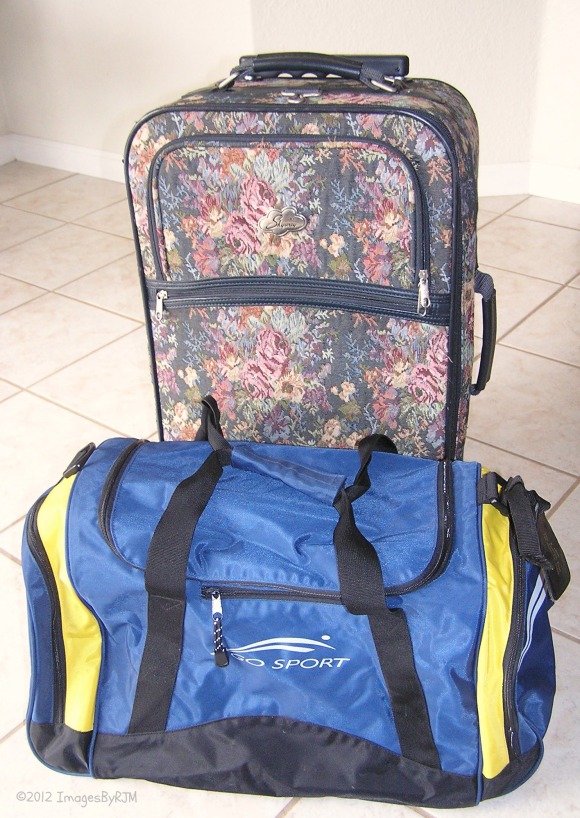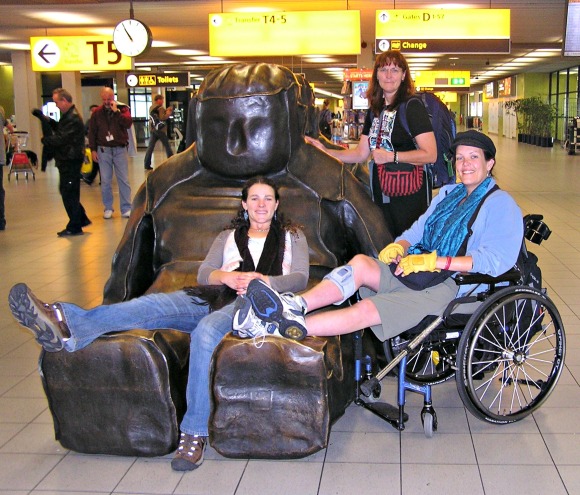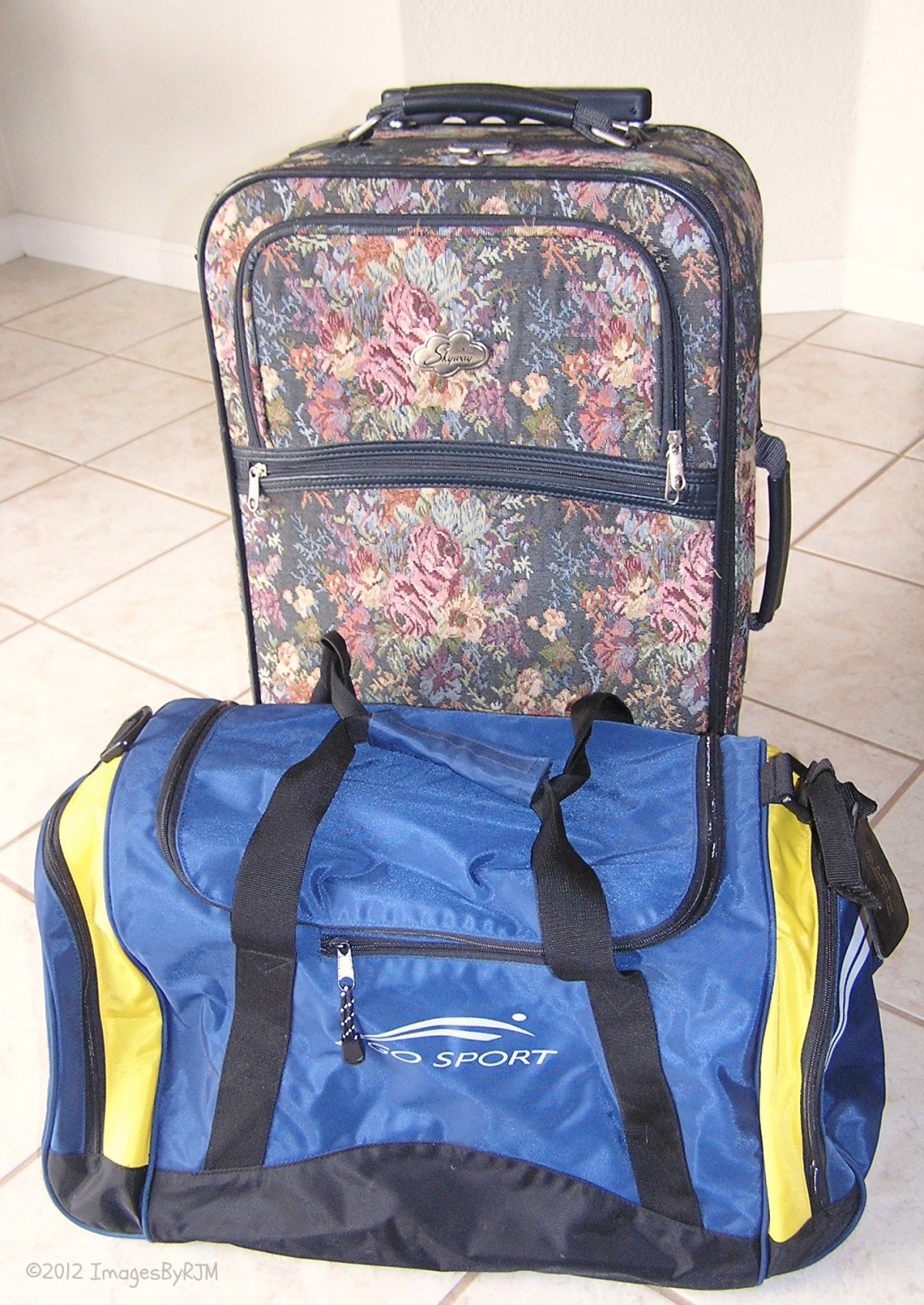
It’s the end of November: One week after Thanksgiving; three and a half weeks before Christmas.
The “Holiday Season.” A time when people frequently choose to visit family and friends. Or they decide to do just the opposite: Take a vacation and “get away from it / them all!”
Either way, travel – most often by car or airplane — is involved. And that, of course, means packing.
I have traveled often enough to have a fairly good packing list in my head (which, of course, I commit to paper so I am less likely to forget something!) And I prefer not to check luggage, so my list is fairly basic: Passport, toiletries, one extra pair of shoes, clothes that coordinate and can be layered, et cetera, et cetera. A carefully-packed carry-on suitcase and laptop bag, and I’m ready to go!
It’s quite different when I travel with Carrieanna. Whether we are driving to Oregon, flying to Arizona, or “crossing the pond” to get to Europe, she needs to take more “stuff” in order to be comfortable while traveling.
I have asked her (and a few other friends who are “disabled” travelers) to share their travel tips and special needs. Here are some suggestions:
Before you go:
- First, make a list of what you need to take, and make sure you have packed and can cross everything off that list. While this may seem like an obvious suggestion, it’s especially important for people who have memory problems (very common in people with M.S.).
- Some items that might be included in checked luggage are: Incontinence supplies, bed protector, noise-reduction aids, bath chair and screwdriver. (While you can usually request a bath chair in American hotels, we found that we had to take our own when we traveled to Holland.)
- Have a printed list of all prescription medications, and keep the list with the meds. (If you are going to include prescriptions in both your checked luggage and your carry-on, have two copies.) It’s probably also a good idea to include the name and phone number of your primary care physician and any specialists (i.e., neurologist) on the list.
- Unless you plan to rely on taxis throughout your trip, be sure to take your handicap parking placard.
At the airport:
- Do not check in online. If you need to change your seat to one closer to the lavatory, on an aisle, in bulkhead, etc., making your request in person increases the likelihood that you can get what you need.
- Carrieanna has learned that wheelchair users don’t wait in the regular line to check in. She goes through the First Class line (and so does her traveling companion).
- Although I just take carry-on luggage, and Carrieanna can wheel herself, we still have too much stuff for the two of us to manage alone. So we ask for skycap assistance, and we take cash in order to properly thank our assistant. (Some accept the tip; others do not. Either way, we are prepared.)
- It’s also important to let the skycap know how many people are in our party, so no one gets left behind.
- Specifically ask someone (your traveling companion or the skycap) to keep tabs on personal items (shoes, backpack) and assistive devices (cane, walker, etc.) that must go through the TSA X-ray process. Because wheelchair users are individually screened, knowing that someone is keeping track of and collecting personal items helps reduce Carrieanna’s pre-flight stress.
- Carrieanna has found that being one of the last people to board the plane means less time sitting. (And she lets the airline personnel at the gate know this, so they don’t insist that she pre-board.)
- Once she is on the plane, her foldable wheelchair is stowed with the checked luggage. We have learned that folding and securing the wheelchair with a luggage strap somewhat decreases the likelihood that it will be damaged in the cargo area.
One last suggestion: If you are traveling out of the country, do a little research to see how that country handles accessibility issues like wheelchair rental and repair, availability of bath chairs in hotels, etc. For instance, a recent post on Accessible New Zealand Tours‘ Facebook page provided a list of suggestions. (See Monday, 11-26-12.)
These are just a few tips we have learned.
If you require special assistance, or travel with someone who does, what tips can YOU share? We’d love to read your comments!



3 replies on “Get Ready, Get Packed, Go!”
Thank you, ladies. I’m glad these tips are helpful.
LikeLike
Some very good hints I had not thought of. Thank you!
LikeLike
Travelling (airport juggling) can be a “chore” but you make it seem do-able. Thanks Jeri.
LikeLike